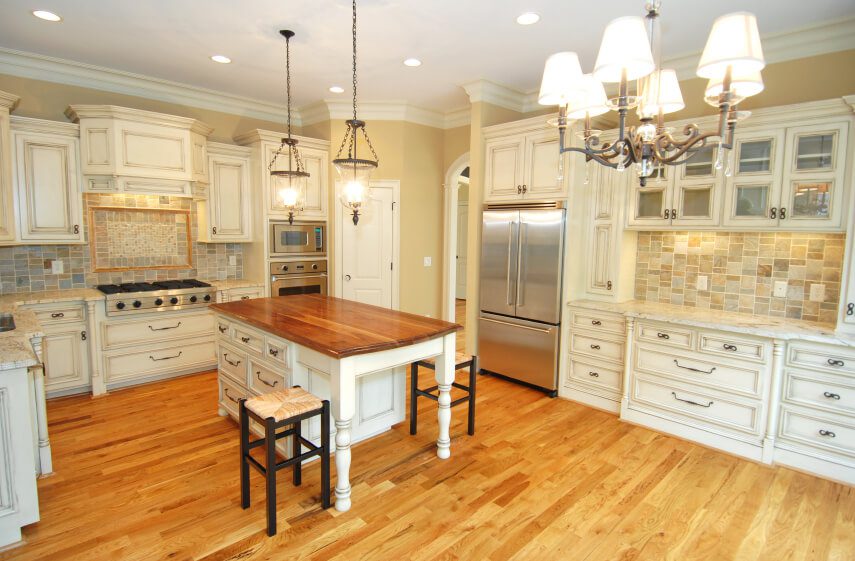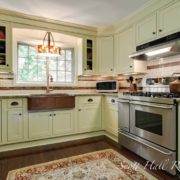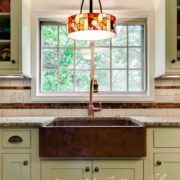Kitchen Cabinet Crown Molding Styles
Crown molding is a design element that is popular as a finishing feature to many rooms in both older and newer homes. It also adds a degree of old school style to any traditional or transitional kitchen when installed on the tops of cabinets. While they can prove tricky to install, the finished look they provide cabinets is worth the extra effort.
Cabinet crown molding can be made from solid hardwoods such as birch, cherry, oak, or maple. It even be made from PVC and other materials. While ther e are many millwork shops that can create custom designs, many cabinetry lines offer a variety stock molding options. There are 5 common categories of cabinet moldings, with each offering hundreds of unique design profiles to match considerations for both fashion and function.
e are many millwork shops that can create custom designs, many cabinetry lines offer a variety stock molding options. There are 5 common categories of cabinet moldings, with each offering hundreds of unique design profiles to match considerations for both fashion and function.
Traditional five-step crown molding is a perfect choice for kitchens in older homes, as it gives your cabinets a traditional feel. The alternating steps and angles offer a high-end look to any cabinetry. These are typically among the largest cabinet molding profiles available, often measuring up to 3-½ inches high and nearly 3 inches deep.
Cove crown molding has a concave profile. The elegant curves offer a more contemporary feel to the typically traditional design feature of cabinet molding. However, interestingly enough, this style of crown molding goes all the way back to the decor of the European Renaissance. These moldings are typically 3 inches high and 2-½ inches deep.
Ceiling crown moldings include a combination of steps and curves in their designs. Similar to five-step molding, these are the types of profiles you would expect to be used along a room’s ceiling. This type of molding is best used to provide a continuity with other crown molding being used in the kitchen and can hide the fact when cabinets don’t exactly meet the ceiling. Hence, this is why they are called ceiling crown moldings.
Angle crown molding features simple angles, offering the clean lines that many transitional kitchens are seeking. Many contemporary kitchen designs prefer to include this style, giving a simple finish to your cabinets. Typically, these profiles are 2 inches high by 2 inches deep, offering a symmetrical feel for those that prefer it.
Soffit crown molding is used when vertical space is limited, such as when cabinets are placed below a soffit – hence the name. It’s perfect for kitchens with relatively low ceilings. These profiles are typically no taller and no deeper than 1-¼ inches. They are similar to ceiling crown moldings in usage, but the smaller profiles make them less of a design statement. Their low profiles are subtle and help the cabinets appear to fit better in the space. Think of them as a condensed version of five-step molding.
While we’ve mentioned five common categories of molding profiles. there are other many other custom cabinet molding designs, as well. There are ornate options such as Acanthus leaf, basketweave, carved vine, egg and dart, and rope insert moldings. Depending on the overall style of your kitchen and cabinetry, you’ll want to ask your designer what your best options are when it comes to the most appropriate styles.

















